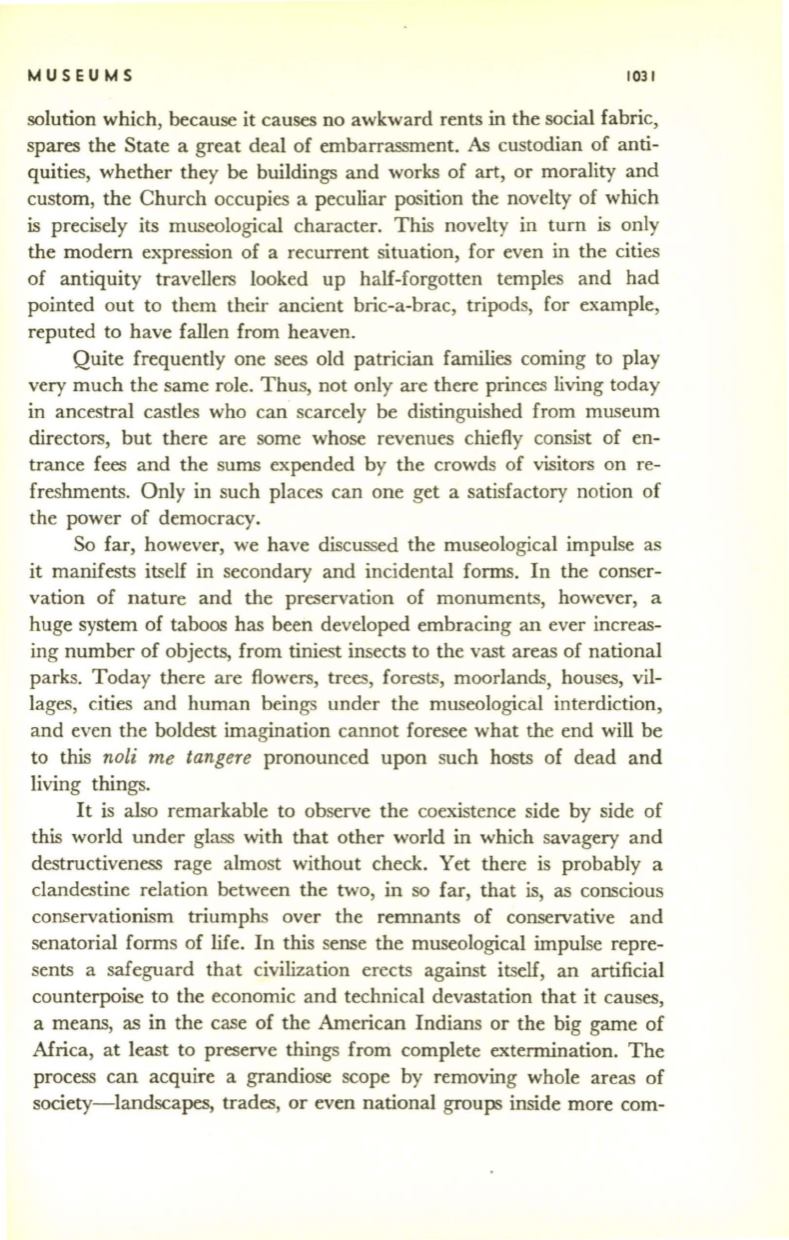
MUSEUMS
1031
solution which, because it causes no awkward rents in the social fabric,
spares the State a great deal of embarrassment.
As
custodian of anti–
quities, whether they be buildings and works of art, or morality and
custom, the Church occupies a peculiar position the novelty of which
is precisely its museological character. This novelty in turn is only
the modern expression of a recurrent situation, for even in the cities
of antiquity travellers looked up half-forgotten temples and had
pointed out to them their ancient bric-a-brac, tripods, for example,
reputed to have fallen from heaven.
Quite frequently one sees old patrician families coming to play
very much the same role. Thus, not only are there princes living today
in
ancestral castles who can scarcely be distinguished from museum
directors, but there are some whose revenues chiefly consist of en–
trance fees and the sums expended by the crowds of visitors on re–
freshments. Only in such places can one get a satisfactory notion of
the power of democracy.
So
far, however, we have discussed the museological impulse as
it manifests itself in secondary and incidental forms. In the conser–
vation of nature and the preservation of monuments, however, a
huge system of taboos has been developed embracing an ever increas–
ing number of objects, from tiniest insects to the vast areas of national
parks. Today there are flowers, trees, forests, moorlands, houses, vil–
lages, cities and human beings under the museological interdiction,
and even the boldest imagination cannot foresee what the end will be
to this
noli me tangere
pronounced upon such hosts of dead and
living things.
It is also remarkable to observe the coexistence side by side of
this world under glass with that other world in which savagery and
destructiveness rage almost without check. Yet there is probably a
clandestine relation between the two, in so far, that is, as conscious
conservationism triumphs over the remnants of conservative and
senatorial forms of life. In this sense the museological impulse repre–
sents a safeguard that civilization erects against itself, an artificial
counterpoise to the economic and technical devastation that it causes,
a means, as in the case of the American Indians or the big game of
Mrica, at least to preserve things from complete extermination. The
process can acquire a grandiose scope by removing whole areas of
society-landscapes, trades, or even national groups inside more com-


